PHILADELPHIA
December 15, 2005 –
April 30, 2006
National Constitution
Center
ST. LOUIS
June 9, 2006 –
September 4, 2006
Missouri Historical Society
HOUSTON
October 13, 2006 –
January 21, 2007
The Houston Museum of Natural Science
DENVER
March 2 , 2007 –
May 20, 2007
Denver Museum of Nature & Science
ATLANTA
July 4, 2007 –
October 14, 2007
Atlanta History Center
PARIS
December 4, 2007 –
March 30, 2008
Musée des Arts et Métiers and Musée Carnavalet

|
 |
 |
 |
 |
 |
|
 he international traveling exhibition, Benjamin Franklin: In Search of a Better World, toured to five cities in the United States and to Paris between December 2005 and March 2008. Featuring 250 artifacts, many of which were owned by Franklin, and over 40 different interactive activities, the exhibition was viewed by over 700,000 people. he international traveling exhibition, Benjamin Franklin: In Search of a Better World, toured to five cities in the United States and to Paris between December 2005 and March 2008. Featuring 250 artifacts, many of which were owned by Franklin, and over 40 different interactive activities, the exhibition was viewed by over 700,000 people.
The exhibition is divided into six sections: Character Matters, B. Franklin Printer, Civic Visions, Useful Knowledge, World Stage, and Seeing Franklin.
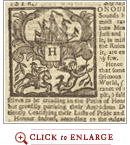
Character Matters is where the viewer meets the young Franklin in the Boston of his youth. Franklin was profoundly affected by his upbringing in early 18th-century Boston where he was steeped in Puritan traditions and teachings, and where he received his training as a printer. Books he read, an animation about of the story of Franklin and his whistle, and a computer game called Seeking Opportunity are included in this section.
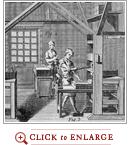
B. Franklin, Printer covers the years when Franklin made his fortune as Philadelphia’s premiere printer. Arriving in Philadelphia in 1723, Franklin steadily expanded his network of personal and professional acquaintances, advanced his publishing business, and became a wealthy man by the time he was 42. An entrepreneur, Franklin also diligently pursued the cause of self-improvement. This section features Franklin’s original printing equipment juxtaposed with several hands on activities and media experiences. In addition, the stories of Franklin’s family— Deborah, William, Sally, and little Franky— unfamiliar to many, are recounted in this section.
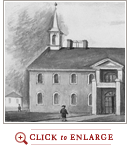
Civic Visions tells the story of Franklin’s involvement with the founding of several key philanthropic, educational and civic institutions. From self-improvement, Franklin turned his attention to improving the community around him, asking himself, “What good shall I do this day.” Franklin and a group of eleven working-class friends, known as the Junto were at the core of several Philadelphia institutions that were founded in the mid-18th century on behalf of the citizens of that city. Many of these institutions, such as Pennsylvania Hospital and the University of Pennsylvania continue today, and the account of their founding is told in this section, focusing on the universality of this group of institutions— basic to any new, rapidly growing community.
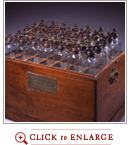
Having made enough money to retire from active business at the age of 42, Franklin devoted the next part of his life to the search for Useful Knowledge. At the center of his search was the American Philosophical Society, formed with like-minded friends in 1743. In this section visitors see an array of scientific instruments used by Franklin and the most famous scientists— known as philosophers— of his day. Through a group of science-related interactives, visitors also have fun investigating the scientific problems that intrigued Franklin.
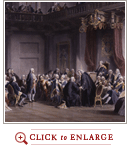
World Stage begins with Franklin’s political career in colonial Pennsylvania, proceeds to his years in England, and concludes with his years in France, from where he finally departed in 1785. This section covers the time in Franklin’s life when all of his worlds— literature, science, politics, diplomacy, and his fascination with the material world— came together at a critical time in modern history. Five years before his death, Franklin returned to Philadelphia as an elder statesman and was welcomed as a hero. Seventy-nine years old and suffering from gout, Franklin deftly re-entered the Philadelphia political scene and became President of the Pennsylvania Assembly and served in the Constitutional Convention. And at the very end of his life, Franklin espoused a new cause -- the abolition of slavery.
On view in this section are original copies of all five founding documents signed by Franklin.
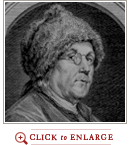
The final section, Seeing Franklin, includes Franklin's Autobiography, with original versions of all the early translations, the last life portrait of Franklin and his epitaph. Images of Franklin from the 19th and 20th centuries combine with quotations suggesting Franklin's relevance to our time. The final exhibit is a great pair of spectacles— the kind Franklin wore— set atop enormous leather bound books. The lenses show an image of Franklin in his fur cap. Ben’s image is composed of hundreds of small plastic tiles, which move and tilt to reflect an image of the visitor. Above this we ask, "Do you See Yourself in Franklin?" We are all capable of lifelong curiosity, discovery, and doing well by our fellow humans while improving ourselves. This reflective experience is the final and lasting image of the exhibition.
|
 |
|
|